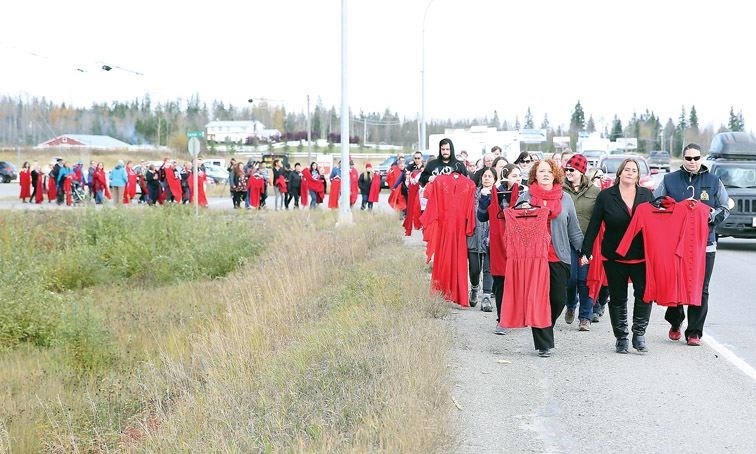"Close your eyes."
Councillors and staff complied with the three-word instruction at Monday night's meeting.
Tammy Meise told her audience she wanted to take them back to the fall day she and others brought the Red Dress Project to Prince George - a visual reminder of the many missing and murdered aboriginal women through the form of many red dresses.
"I want you to think of the heartbeat of every single murdered woman," said Meise as Brenda Wilson-John drummed softly in the background.
Both women have lost loved ones.
Wilson-John's sister Ramona Wilson went missing in 1994 and was later found murdered.
And Meise organized the red dress campaign on the 19th anniversary of her friend Kari Anne Gordon's death. Gordon went missing in fall 1997 and her body was discovered by hikers at Little Lillooet Lake in the spring of 1998.
"I want each and every one of you to feel what we felt that day," said Meise, describing the row of scarlet dresses that lined Highway 16.
"To me success was if I had 25 people out on that highway with me...There were over 85 dresses that day," she said.
"Every single missing or murdered woman that day truly got a voice. They did. If it wasn't for such an amazing community that we live in, this wouldn't have been possible."
Meise spoke slowly through a slideshow of images from the Oct. 2 event.
One woman held the campaign's symbol - a Canadian flag, with the maple leaf replaced by a red dress.
Leading up to the event, Meise started seeing dresses hanging from windows in homes throughout Prince George.
"It kind of sparked something... They started popping up," she said. "It created actually a lot of conversation which again creates awareness."
One-by-one once the drumming stopped, councillors thanked Meise for her work and her heartfelt presentation.
"It was a powerful event to be a part of," said Susan Scott. "I think it's a gift to come back and share the experience."
Frank Everitt said Meise represented community to him.
"You've taken an issue, you've made it the community's issue. You're passionate," he said.
"Thank you very much for what you do for our community and on behalf of the people who can't speak anymore."
Terri McConnachie said the city's financial support of the event might have been the best $500 it's spent all year.
"What an honour to be able to give a little bit of wings, I suppose," she said.
Brian Skakun noted the timely connection to a vote before council Monday night to put $50,000 toward transit along Highway 16, which was unanimously supported.
Near the end of her presentation, Meise noted the same week of the red dress campaign, there were several key acts of reconciliation throughout the city.
The University of Northern B.C. unveiled its dual language campus sign and raised a permanent Lheidli T'enneh flag. That week it was Orange Shirt day in schools, in honour of residential school survivors and reconciliation. And, the City of Prince George supported Meise's event, outfitting Mr. PG with the red dress flag.
"It just shows how much work we have to do collectively as a community to start healing these broken relationships that we have," Meise said.
"By all of us coming together... we are creating a path to a better relationship."



